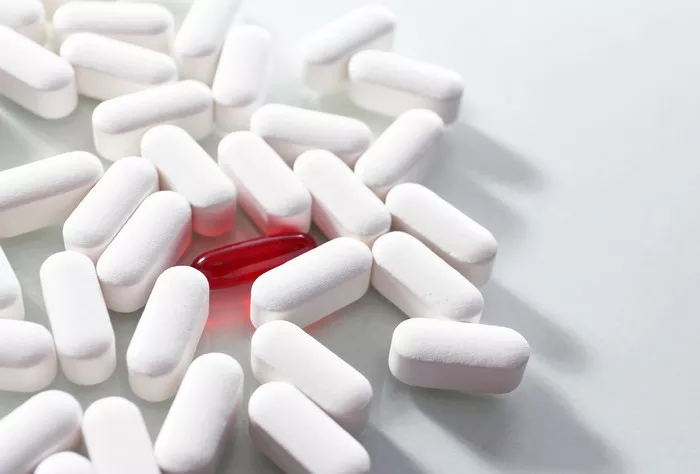Adolescence is a pivotal time of transition, marked by rapid changes, both physical and emotional. It is a time when young individuals are establishing their identities, navigating complex social relationships, and developing coping mechanisms for future challenges. However, it is also a period when mental health concerns, particularly depression, can arise. Depression in adolescence is not just a passing phase; it is a serious mental health condition that can impact a young person’s ability to function in daily life. Understanding the causes of depression during this stage is crucial for prevention and effective intervention.
What Can Cause Depression In Adolescence? This article explores the various factors that can lead to depression in adolescence, from biological influences to environmental stressors. By delving into these causes, we aim to shed light on the complex nature of adolescent depression and provide insights into how it can be managed and prevented.
Biological Factors Contributing to Adolescent Depression
Biological factors play a significant role in the development of depression during adolescence. These factors include genetics, changes in brain chemistry, and hormonal fluctuations.
Genetics and Family History
One of the most well-documented factors in adolescent depression is genetics. If a family member, particularly a parent or sibling, has experienced depression, there is a higher likelihood that an adolescent may also develop the condition. Genetic predispositions can influence brain function and chemistry, making some individuals more susceptible to mental health issues like depression.
However, genetics alone are not enough to cause depression. Environmental factors, including life stressors, can interact with genetic vulnerabilities to trigger the onset of depressive symptoms. For example, an adolescent with a genetic predisposition to depression may be more likely to experience it in response to stressful life events.
Brain Chemistry and Neurotransmitters
The brain’s neurotransmitters—chemical messengers that transmit signals between nerve cells—are central to mood regulation. In individuals with depression, there is often an imbalance in the levels of neurotransmitters such as serotonin, norepinephrine, and dopamine. These imbalances can affect mood, sleep patterns, appetite, and energy levels.
Adolescence is a time of significant brain development, and changes in brain chemistry during this period can increase the risk of depression. The prefrontal cortex, responsible for decision-making, impulse control, and emotional regulation, is still developing during adolescence. This can make it more challenging for adolescents to manage their emotions effectively, leading to feelings of sadness, hopelessness, or irritability.
Hormonal Changes and Puberty
Puberty, which typically occurs between the ages of 10 and 14, brings about significant hormonal changes that can affect mood and emotions. The surge in hormones such as estrogen and testosterone can contribute to mood swings, irritability, and emotional vulnerability. While these hormonal changes are a normal part of adolescence, they can sometimes make young individuals more susceptible to depression.
Additionally, some adolescents may experience a delay in their pubertal development, which can contribute to feelings of inadequacy and low self-esteem, further increasing the risk of depression.
Psychosocial Factors and Environmental Stressors
While biological factors play a significant role in the development of depression, environmental and psychosocial factors are equally influential. The pressures of adolescence, such as academic expectations, social struggles, and family dynamics, can contribute to feelings of hopelessness and sadness.
Peer Pressure and Social Comparison
Adolescence is a time when social relationships and peer approval become central to a young person’s sense of self-worth. Peer pressure, bullying, and the desire to fit in can create stress and lead to depressive symptoms. Social media has exacerbated this issue, as adolescents may compare themselves to the curated, idealized versions of their peers online. This constant comparison can lead to feelings of inadequacy, loneliness, and isolation, all of which are risk factors for depression.
Bullying and Social Exclusion
Bullying, whether physical or cyberbullying, can have a devastating impact on an adolescent’s mental health. Victims of bullying often experience feelings of low self-esteem, rejection, and hopelessness, all of which can lead to depression. The emotional toll of being bullied can cause long-lasting psychological harm, with many adolescents experiencing symptoms of depression as a result.
Social exclusion, even without bullying, can also contribute to depressive feelings. Adolescents who feel isolated or disconnected from their peers may struggle with loneliness, which can exacerbate depression. The need for social connection during adolescence is paramount, and a lack of meaningful relationships can have serious consequences for mental health.
Academic Pressure and Performance Expectations
The academic pressures faced by adolescents can also contribute to the development of depression. Many adolescents face intense pressure to perform well in school, succeed in extracurricular activities, and meet the expectations of their parents, teachers, and society. The fear of failure or not measuring up to these expectations can lead to stress, anxiety, and eventually depression.
The stress of academic performance is particularly pronounced for those who struggle with learning disabilities or who have difficulty keeping up with their peers. Adolescents who feel academically inferior may experience feelings of worthlessness, which can lead to depression.
Family Dynamics and Dysfunction
Family life plays a crucial role in adolescent mental health. Supportive and nurturing family relationships can act as a buffer against depression, while dysfunctional family dynamics can increase the risk. Factors such as parental divorce, neglect, abuse, or inconsistent parenting can contribute to feelings of insecurity and depression.
Adolescents may also experience depression in response to family conflicts, such as disagreements with parents or siblings, or the stress of financial instability. Children who grow up in high-stress environments may develop maladaptive coping mechanisms, such as withdrawing from others or turning inward, which can contribute to the development of depression.
Trauma and Adverse Childhood Experiences (ACEs)
Trauma and adverse childhood experiences (ACEs) are powerful contributors to the development of depression in adolescence. ACEs include experiences such as physical or emotional abuse, neglect, the death of a parent, witnessing domestic violence, or living in a household with substance abuse or mental health issues.
The impact of ACEs can be profound, altering an adolescent’s brain development and emotional regulation. Adolescents who experience trauma may struggle with feelings of fear, helplessness, and distrust, all of which are risk factors for depression. The emotional scars left by these experiences can shape an adolescent’s worldview and increase vulnerability to mental health disorders.
Cultural and Societal Expectations
Cultural and societal expectations can also play a role in the onset of depression in adolescence. In some cultures, there may be immense pressure to conform to specific gender roles, succeed academically, or meet societal standards of beauty or success. Adolescents who feel they cannot meet these expectations may struggle with feelings of inadequacy and shame, which can lead to depression.
For example, in societies where academic success is highly valued, adolescents who face academic challenges may feel like they are failures. Similarly, societal pressures to conform to certain body ideals or gender norms can cause significant distress for adolescents who feel they don’t fit the mold.
Substance Use and Its Impact on Depression
Substance use, particularly alcohol and drugs, is a common coping mechanism for adolescents dealing with emotional pain. However, substance use can exacerbate depressive symptoms and increase the risk of developing a full-blown depressive disorder. Many adolescents use substances as a way to numb their emotions or escape from stressors such as bullying, academic pressure, or family problems. Unfortunately, substances can also affect the brain’s chemistry, worsening depression and leading to a vicious cycle of substance abuse and mental health issues.
Moreover, the use of drugs or alcohol can impair judgment and increase impulsivity, leading to risky behaviors that may have negative consequences for an adolescent’s mental health.
Sleep Disturbances and Depression
Sleep disturbances are both a symptom and a contributor to depression in adolescence. Many adolescents experience changes in their sleep patterns, including difficulty falling asleep or staying asleep, due to stress, hormonal fluctuations, or excessive screen time. Sleep deprivation can exacerbate depressive symptoms, creating a cycle of poor sleep and worsening mood.
Adolescents who are not getting enough sleep may have trouble concentrating, feel irritable, and experience a decline in their emotional resilience, all of which can increase the risk of depression.
Conclusion
Adolescent depression is a complex and multifaceted condition that can result from a combination of biological, environmental, and psychological factors. Genetics, brain chemistry, hormonal changes, and life stressors such as peer pressure, family dysfunction, and academic pressures can all contribute to the onset of depression during this critical period of development.
It is important to recognize that depression is not simply a normal part of growing up. It is a serious mental health condition that requires attention and intervention. Early identification and appropriate treatment, including therapy, support from family and peers, and sometimes medication, can help adolescents manage depression and lead healthy, fulfilling lives.
By understanding the many causes of adolescent depression, parents, educators, and mental health professionals can work together to provide the support and resources necessary to help young people navigate this challenging period of their lives. Addressing the root causes of depression and providing early intervention can make a significant difference in an adolescent’s mental health and well-being.































